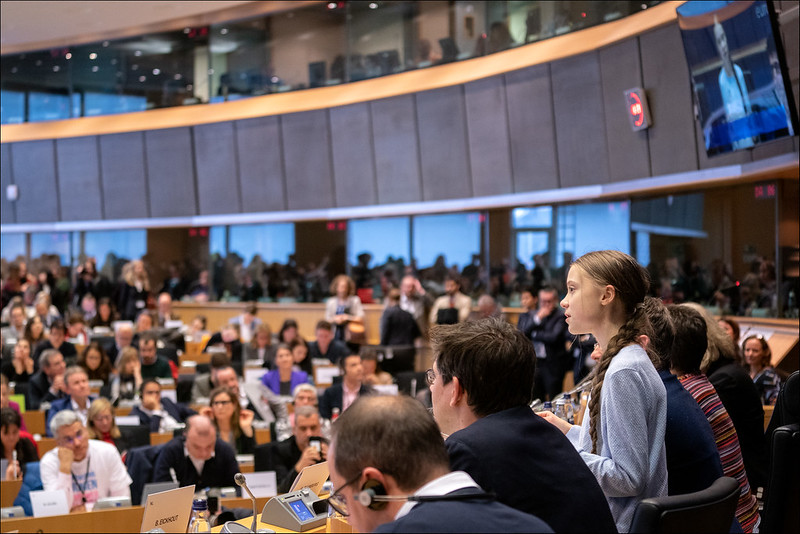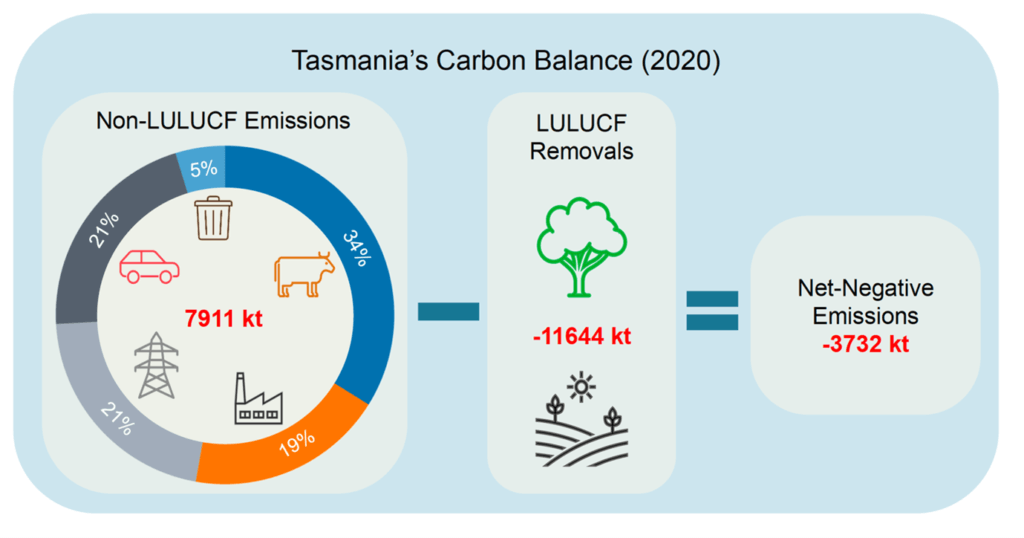St. Michael's Collegiate School 10A Geography

Hello hello Collegiate Geographers!
Thank you for your questions about climate change. You asked some really interesting questions about government and individual action, diet, accountability and future of our Earth.
You'll find answers to your questions from our climate experts below - have a read and watch their answers.
You can also have a look at what other classes across Tasmania asked this year, as well as our climate change toolkit.
Our Questions
This is a great question! The recent IPCC report (from the Intergovernmental Panel on Climate Change – which includes experts from Tasmania!) tells us that collectively, we will need to act fast to make changes to limit global warming to 1.5°C in the next decades. If we can manage to greatly reduce global greenhouse gas emissions (such as carbon dioxide, or CO2, by driving less or by burning less fossil fuels like coal) we can limit climate change. Most likely, it could take 20-30 years to see global temperatures become stable.
To help have quick and large impact, we need to take action at individual, collective and systematic levels:
At an individual level, each of us can do things like:
- Aim to take the bus, or walk or ride your bike to school more instead of travelling by car.
- Eat more vegetables and less meat (maybe even encourage your family and friends to have ‘meat free Mondays’?!) Plant-based foods generally produce fewer greenhouse gas emissions and they also require less energy, land, and water usage. Or try to eat more local food that hasn’t need to come from far away, which is a fun way to try new food and get to know Tasmanian food producers at your local farmer’s market!
- Speak up! Tell your friends and family about climate change and the small changes each of us can do to make a difference - remembering that we all have different abilities to make these changes, big and small.
But remember that this will require more than just individual action. And whilst reducing emissions is a good thing, if we completely stopped emitting CO2 tomorrow, there wouldn’t be enough energy to generate electricity, or for us be able to travel and bring people and food to places around the world. That means we need to change our systems (like the ways we transport things, and make electricity) so that we can live without needing to use fossil fuels.
As you’ve outlined in your question, we need to work together to achieve these kinds of system changes to take action on climate. Using our voices to demand change is also a really important thing we can do. Find out more things we can all do on the 'What can I do?' page.
The answer to this question is not straightforward as the emissions from a school (or any other organisation) depend on the size, location, and resource use for each school, among other factors. For example, a small school is likely to have lower emissions than a large one, but a large school that produces its own electricity via solar panels would likely have lower emissions than a small school using electricity from the grid.
When calculating a carbon footprint (the amount of greenhouse gas emissions released by an organisation or individual), it is important to include both direct and indirect emissions. For example, driving a car produces direct emissions from the use of fuel by the car, while using a computer produces indirect emissions from the use of electricity generated at a coal-fuelled power station. Similarly, a piece of paper has associated indirect emissions from the production and transport of the product.
More and more organisations, including schools, are measuring their emissions and developing plans to reduce these emissions. To provide an idea of the magnitude of emissions for a school, Corinda State High School in Queensland reported 1,075 tonnes of carbon dioxide equivalent(CO2-e) for 2020 in their Public Disclosure Statement for their carbon neutral certification by the Commonwealth Climate Active Carbon Neutral Standard. This is the equivalent of driving 488 fossil fuel burning cars for a year.
Carbon dioxide equivalent is a measure used to compare the emissions from various greenhouse gases by converting amounts of other gases to the equivalent amount of carbon dioxide. For example, the global warming potential of methane (a greenhouse gas released by cattle or decomposing waste in landfills) is 25 times higher than carbon dioxide, therefore 1 tonne of methane would equal 25 tonnes of CO2-e.
This is an excellent question, and one of the questions most students want an answer to. You can be someone who takes climate action!
Each of us can act individually (on our own) and collectively (together with others) to act on climate. We know, from scientific evidence, that climate change cannot be stopped and is happening already – but it can be reduced and slowed down. People today and into the future (including you) can make changes and decisions that will greatly reduce climate change and its impacts.
Some of these decisions are happening on a systemic scale - they the really big changes we need to reduce emissions from industries and electricity generation.
For example, world leaders are meeting together at COP26 (which is the UN Climate Change Conference of the Parties) to discuss pathways to do this – in particular, to ensure that global temperature rises do not exceed 1.5 degrees, and how we can adapt to climate change impacts into the future. If we can manage to greatly reduce global greenhouse gas emissions (such as carbon dioxide) we can limit climate change.
You might wonder how young people can influence big changes like this? By using your voices! Young people are involved in many groups and movements such as the School Strikes for Climate that have already made a difference to the way world leaders think about climate action.

At a smaller scale, all of us can do something to make positive changes and have an impact on tackling climate change. Some people can do more and less than others, and that is OK - it’s great actually because lots of small changes can lead to big impact. In everyday life, there’s lot that you might be able to do, for example:
- You can aim to take the bus or walk, or ride your bike to school more.
- You could eat more vegetables, and eat meat less often (maybe even encourage your family and friends to have ‘meat free Mondays’?!). Plant-based foods generally produce fewer greenhouse gas emissions and they also require less energy, land, and water usage.
- You can speak up! Tell your friends and family about climate change and the small changes each of us can do to make a difference - remembering that we all have different abilities to make these changes, big and small.
There are a lot more ideas you can check out on our 'What can I do?' page.
Wow, that really is the million-dollar question, but an important one to ask! I think the most effective strategy is being engaged in whatever way you can. Climate change is a human made problem - the solutions to climate change will also have to come from us. So having passionate, curious, enthusiastic and dedicated people engaging in the process, for me, is the most effective strategy.
How you engage in this can be completely up to you! You don’t have to be a mathematician modelling carbon emissions, or an ecologist investigating the impacts of climate change on the Great Barrier Reef 😊 You can have a conversation with your friends and family about climate change and tell them why it is such a big issue and what they, you, and we all can do to take action and make a difference. You can discuss your worries for the future and the changes you would like to see. You can take part in protests about political decisions you disagree with. You can sign and share climate action petitions online. The most important thing is to make your voice heard.
There are lots of things, big and small, we can all do to help address climate change. The important thing to remember is that we should try to do something but not feel guilty if we can’t do everything. We all have different abilities 😊 Check out the Curious Climate Schools website for ideas on ways we can take action on climate.
The best way to hold people accountable for their carbon footprint is called ‘carbon pricing,’ which means putting a price on carbon dioxide emissions, so that it becomes more expensive for companies to pollute, and for people to buy products that are polluting.
This corresponds to what we call ‘the polluter-pay principle.’ It means that the person (or company) who is responsible for the pollution must pay for the damage it causes. For example, if companies paid a tax on the amount of carbon dioxide they use, their business would become more expensive to run, and this would encourage the company to invest in alternative sources of energy (wind and solar energy).
A variation of this principle is ‘the user-pay principle.’ It is the idea that the consumer, who benefits from the pollution, should pay for the damage. For example, if products with a high carbon footprint were more expensive, people would want to buy less of them, and use alternatives.
This is a great question as it highlights the important role of thinking about our food choices in responding to climate change. But if everyone in the world was vegan, that wouldn’t necessarily be the best way to help slow climate change because we would need a very large land area to grow enough crops. Cutting down trees to clear land for crops is not helpful for climate change because we need trees to help take carbon out of the air.
So instead of everyone in the world being vegan it would be better if everyone in the world reduced how much beef and lamb they ate to maybe once or twice a week or even less and for the rest of the time ate more chicken, fish or vegetarian meals. It is healthier for us to eat less red meat anyway and in Australia we already eat far more red meat than dieticians recommend. That is because we farm a lot of cattle here and our access to high quality and affordable meat is good.
Being vegan can be a much more environmentally sustainable way of eating if you are eating local (or home grown) produce, but it can have health implications for some people, especially children, so it is important to make the decision considering health as well. So the answer is yes, being vegan can really help to reduce emissions but the key part is being aware of what you are eating.

There are also other options to eat more sustainably. Eating food that you grow yourself is great. Do you have chickens at home? As well as eating more locally produced food, including meat. Trying to reduce waste from the food that you eat is also helpful. Eating kangaroo and wallaby is another great option for red meat! Have you tried wallaby? It is great on the BBQ or in a curry. So it is helpful for climate change and our health to reduce the amount of meat we eat, particularly red meat, but meat is still ok in small amounts. Thinking about what we are eating, how it was produced and where it is coming from and making choices that have less emissions is a really great way to help combat climate change.
In most places, energy generation, using fossil fuels, is the largest contributor to climate change. In contrast, Tasmania is lucky to have a low-emissions energy generation – much of our energy is produced by hydroelectricity. The single biggest emitter of greenhouse gases in Tasmania is the agriculture sector – which contributes 34% of our overall greenhouse gas emissions. However, carbon accounting (the process of calculating overall emissions and offsets) is quite complex in Tasmania. Let’s take a look…
In fact, Tasmania is one of the few places in the world to have already achieved “net-zero” status. That means, Tasmania currently takes more carbon from the atmosphere than it emits - absorbing and storing carbon in our forests and our soils. Tasmania’s greenhouse gas emissions in 2020 were -3733 kilotonnes CO2 – e: “CO2 – e” means “carbon dioxide equivalent”. This is a measure used to compare the emissions from various greenhouse gases based on their global warming potential.
Tasmania’s negative emissions profile is a nationally and internationally significant achievement, but there is more to the story. If we want to keep this status, we can’t be complacent. Currently, Tasmania’s main emissions come from agriculture (34%), industrial processes (19%), transport (21%), non-hydro energy generation (21%) and waste (5%). Tasmania’s main “offsets” – or sources of carbon absorption – are forests and soils: a sector known in carbon accounting as “land use, land use change and forestry” or “LULUCF”. So Tasmania’s emissions profile looks like this:

Keeping our emissions profile low over the longer term will mean we need to do better at cutting our overall (or “gross”) emissions – on the left, above. In fact, we haven’t reduced these emissions much for 30 years, and emissions from agriculture have increased the most over the last decade. Importantly, research shows us that the effects of climate change – like rising temperatures, bushfires, and changing rainfall patterns – will decrease Tasmanian forests’ capacity to absorb carbon. Also, continued old-growth forest clearing and the maturing of managed forests means that over time, our forests be less of a carbon sink. If Tasmania keeps a business-as-usual approach, emissions will remain below net-zero until about 2025, but, from 2030 onwards particularly in years with major bushfires, Tasmania will likely become an emitter of carbon once again.
We therefore need to work to reduce gross emissions, and better protect our original forests to keep our net-zero status long term.
It can be very frustrating to witness the slow pace of action by governments to limit climate change, particularly when we look at the record of the current Australian Federal Government. But Australia did once have a very effective climate policy. Julia Gillard's government introduced the Clean Energy Act, which put a price on carbon emissions, and operated from 2012-2013. This reduced carbon emissions by the biggest polluting companies by 7%. But the price on carbon only lasted one year because Australians voted to replace the Labor Gillard government with a Coalition government under Tony Abbott, who repealed the Act.
Since then, Australia has not had an effective national climate policy. But several state governments, local governments and and some companies have introduced their own policies. The Tasmanian Government is now legislating that Tasmania will have a Net Zero carbon emissions by 2030.
Momentum is building and we still have a small window of opportunity for our governments to make systemic change to limit global climate change to 1.5 or 2 degrees Celcius.
What are the things that make governments act on climate change?
- Voters. If enough people of voting age tell political parties that they won't vote for them unless they promise to act on climate change, they would be forced to act, or lose power. You may not be of voting age, but you can tell the adults in your life who do vote how important this issue is to you.
- International pressure. Australia is part of the United Nations. This organisation of 193 countries has an international convention on climate change, which Australia is a signatory to, and must abide by. The COP 26 Climate Summit in Glasgow is the latest meeting at which countries will agree on actions over the coming decade.
- Economics. Fossil fuels are becoming risky investments, while renewable energy is a growing industry that will create more jobs and profit. Governments eventually have to face this reality, and make sure their policies enable Australians to profit from new industries, rather than propping up doomed ones.













